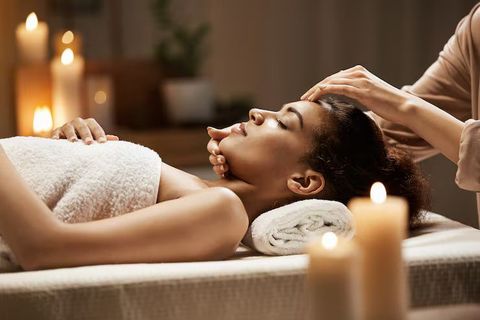
Guide to Massage Spas in 2025: Learn Key Practices, Benefits, and Mind-Body Wellness Approaches
Massage spas have evolved into dedicated spaces for relaxation, stress reduction, and mind-body wellness. They combine therapeutic touch, soothing environments, and wellness-focused practices to support physical and mental wellbeing. Historically, massage therapy has roots in several cultural traditions including Ayurveda, Traditional Chinese Medicine, and Western therapeutic massage approaches. Over time, these practices adapted to different health needs, such as relief from muscle tension, stress management, and improved circulation.
By 2025, massage spas emphasize a holistic approach to well-being. Instead of focusing only on soothing muscles, many incorporate mindfulness techniques, aromatherapy, integrative bodywork, and wellness consultations. The focus is on creating a balanced experience where the mind and body are supported simultaneously. This shift aligns with increasing awareness about mental health, chronic stress, and lifestyle-related tension seen across modern work and home environments.
Massage spas today are also part of a broader wellness ecosystem connected to yoga centers, meditation retreats, physiotherapy clinics, and wellness resorts. People visit them for preventive care, emotional balance, and overall rejuvenation, not only for physical relaxation.

Importance
The growing focus on wellness and mental health has made massage spas particularly relevant. Busy routines, digital overload, prolonged screen exposure, and sedentary lifestyles contribute to stress and muscle fatigue. Massage therapy supports the nervous system, reduces muscle tension, and may encourage relaxation responses that help regulate mood and sleep.
This topic matters today because:
-
Many individuals experience chronic stress, anxiety, or sleep issues.
-
Work-from-home and hybrid environments may lead to posture imbalance.
-
Awareness of holistic health and integrative wellness is expanding.
-
People seek non-invasive methods for relaxation and emotional regulation.
Massage spas provide:
-
Stress management support
-
Relaxation and mental clarity
-
Muscle release and body flexibility
-
Improved circulation and lymphatic support
-
Mind-body balance through guided breathing and calming environments
Massage spas affect individuals across age groups, including professionals, students, athletes, and older adults. They also play a role in preventive wellness, helping individuals maintain overall comfort and wellbeing before discomfort becomes chronic.
Recent Updates and Trends (2024–2025)
Several shifts occurred in the wellness and massage spa landscape during 2024 and into 2025:
Integration of Digital Wellbeing Tools (2024–2025)
Some spas now include guided meditation apps, sound therapy sessions, and biofeedback tools. These help track relaxation responses and support deeper calm during sessions.
Rise of Mindfulness-Based Relaxation (2024)
Many wellness practitioners incorporate breathwork, grounding techniques, and mindfulness education alongside massage therapy.
Growth in Natural and Plant-Based Aromatherapy (2025)
A renewed interest in botanical aromatherapy blends has grown, with plant extracts used to create calming atmospheres and support emotional balance.
Focus on Personalized Wellness Plans
More spas encourage personalized wellness consultations, including posture assessments, lifestyle recommendations, and stretching routines.
Wellness Tourism and Retreat Travel (2024–2025)
Destinations known for calm, nature-rich environments now include wellness retreats with spa access, supporting long-term relaxation habits.
Laws and Policies
Regulations surrounding massage therapy vary by region and country. Most places require massage practitioners to hold certification or licensing to ensure safety, hygiene, and ethical practice. Below are general regulatory areas commonly seen:
| Regulation Area | Description |
|---|---|
| Training & Licensing | Practitioners often complete approved educational programs and examinations. |
| Hygiene Standards | Spas must maintain clean facilities, sanitized equipment, and safe environments. |
| Consent & Explanation | Clients are usually informed of procedures beforehand and give consent. |
| Privacy & Comfort | Professional conduct standards ensure respectful communication and client dignity. |
Government health departments or therapeutic regulatory boards in each country typically oversee compliance. These policies help ensure that massage therapy remains both safe and professional.
Tools and Resources
Individuals looking to explore wellness routines or better understand massage practices can use digital and informational resources. These support planning, learning, and awareness of relaxation approaches.
Helpful tools include:
-
Mindfulness Apps: Calm, Insight Timer, Headspace
Useful for meditation and guided relaxation. -
Posture and Movement Tracking Apps: StretchIt, Kaia Health
Support healthy movement routines. -
Wellness Education Platforms: National Center for Complementary and Integrative Health (NCCIH), World Health Organization wellness guidelines
-
Aromatherapy Knowledge Resources: Plant-based wellness and essential oil reference guides
-
Sleep and Stress Tracking Wearables: Smartwatches and wellness bands for monitoring stress levels, heart rate, and sleep patterns.
These tools encourage continuing wellness habits beyond the spa environment.
FAQs
What is the main purpose of massage spas today?
Massage spas support physical relaxation, mental clarity, and emotional wellbeing through therapeutic touch and calming environments. They focus on holistic wellness rather than just physical relief.
Can massage support stress reduction?
Massage may activate relaxation responses in the nervous system, helping to reduce tension and promote calm. It is often used alongside breathing techniques and mindfulness practices to support stress management.
How often do people usually visit massage spas?
Frequency varies from person to person. Some visit occasionally for relaxation, while others make it part of a regular wellness routine, such as weekly or monthly sessions, depending on their wellbeing goals.
Are there different types of massage techniques?
Yes. Techniques include Swedish massage, deep tissue, lymphatic support, aromatherapy-based relaxation, Thai-inspired stretching, and others. Choice depends on comfort and wellness needs.
What should someone consider before selecting a massage spa?
Look for practitioner training credentials, cleanliness, communication clarity, and a comfortable environment. These factors contribute to safety and overall experience.
Conclusion
Massage spas in 2025 represent a broader wellness approach centered on mind-body harmony, stress relief, and restorative care. They combine therapeutic techniques, calming environments, and integrative practices to help individuals manage tension and maintain emotional balance. As awareness of mental and physical wellbeing continues to grow, massage spas remain important spaces for supporting healthier living and personal relaxation routines.
The evolving trends in aromatherapy, mindfulness-based relaxation, and personalized wellness mapping reflect a shift toward more intentional and holistic care. With supportive regulations and an increasing number of educational resources available, individuals can make informed decisions about their wellness journey.
Massage spas today are quiet, grounding spaces where the mind slows, the breath steadies, and the body finds relief. Their role continues to grow as modern life speeds up, creating a consistent need for thoughtful spaces of calm and renewal.






